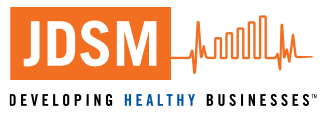By: Kelly Shy, Vice President Business Development
“Have you noticed that we do not know how to talk to each other in person anymore?”
This question was posed to me recently by a surgeon following our first in-person meeting in almost two years. After meeting via Zoom, telephone conferences, and webinars during the COVID pandemic, I had the opportunity to bring 100+ surgeons together for an in-person educational meeting. I had particularly high aspirations for an energetic, highly driven, and productive series of back-to-back board meetings during which the leadership of the state specialty organization would discuss strategy, operations, financial, and regulatory affairs affecting their specialty. What transpired, albeit successful, fell far short of my expectations.
It was not until this question was posed that I was able to pinpoint the problem. As surgeons, these individuals never stopped seeing patients face-to-face; however, with the onset of the COVID-19 pandemic, these interactions underwent an abrupt and drastic change which hindered communication and in some ways productivity.
Working alongside a Certified EOS Implementer™, I have witnessed the intrinsic and extrinsic importance of an established meeting pulse and the value derived from adhering to a pure Level 10 Meeting Agenda™. Following are some helpful tips to consider as we re-enter the world of in-person meetings:
- NO DEVICES ALLOWED: This expectation needs to be firmly re-established. Partly as a result of social distancing and the remote work constraints imposed by the pandemic, we are more reliant on our digital devices than ever before. Rather than accepting the traditional phone on silent at the board room table, establish in advance the expectation that no device will be present at the meeting (regardless of whether in plain sight or on silent/buzzing mode).
- CHECK ON COMFORT LEVELS OF THOSE ATTENDING THE MEETING: Given the range of personal situations that still exist in relation to COVID-19, be sure to understand, respect, and accommodate the personal preferences of your meeting participants. For example, some individuals may still need to social distance in the meeting room, and some may still wish to wear face masks/coverings during the meeting. Rather than highlighting these differences, consider creating a meeting space that accommodates these concerns (personal coffee items at each board seat rather than a general coffee station) in a way that still adds a personal touch to the setup. We have learned of large meetings that used color arm bands to indicate personal space preferences (i.e., green bands mean handshakes/hugs are acceptable, yellow bands for fist/elbow bumps, and red bands signifying personal distance is still requested).
- NEVER UNDERESTIMATE THE POWER OF THE MEETING SEQUE: As our extended period of separation hopefully draws to a close, it can be helpful to the entire team to allow time at the beginning of the meeting for each participant to present their best personal and professional experiences since the last meeting. This crucial exercise provides the much-needed and greatly-missed personal connection, which allows participants to professionally connect and set the tone for the discussions to come. It is vital that all meeting participants have the opportunity to connect and understand each other’s personal and professional mindset so that issues and opportunities can be discussed openly and honestly.
- ALLOW TIME TO ACCLIMATE: Your first meeting may take longer given the time needed for the Meeting Segue. Alternatively, this initial meeting may simply serve as an opportunity to re-acclimate the team and re-establish a meeting pulse. The last year has proven the adage that what you do not use, you lose. We have all lost a portion of our interpersonal skills, especially our ability to pick up on verbal and non-verbal cues. Reading body language is a big part of our communication and listening skills. We need to re-familiarize ourselves with the basics of communication and reacquaint ourselves with principals of body language, verbiage, and personal interaction which have been hidden behind masks or zoom filters for so long. Reviving these buried skills is important in the board room as we return to the Issues Solving Track™ of yore.
I challenge you to step out from behind your mask or zoom filter and re-acquaint yourself with your team members and with the goal of running effective and productive meetings in the new post-COVID-19 era.

